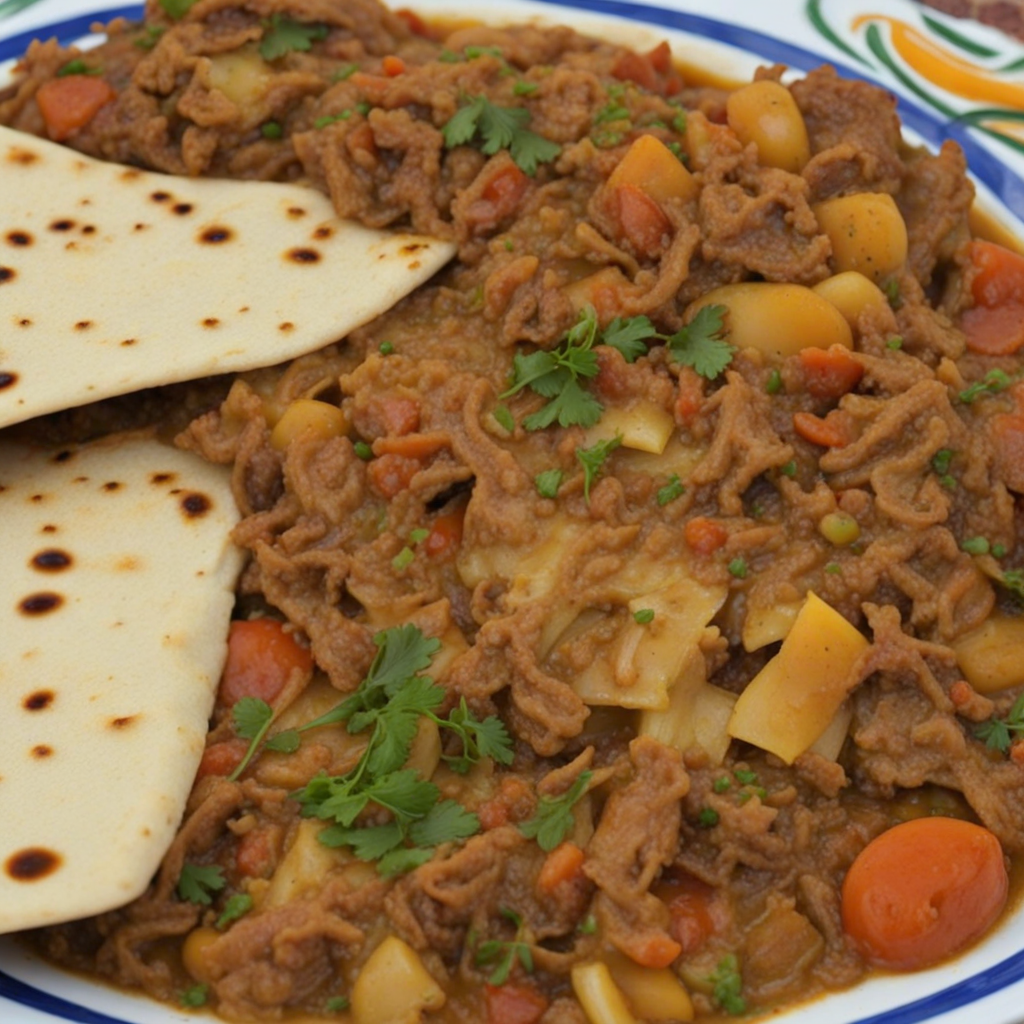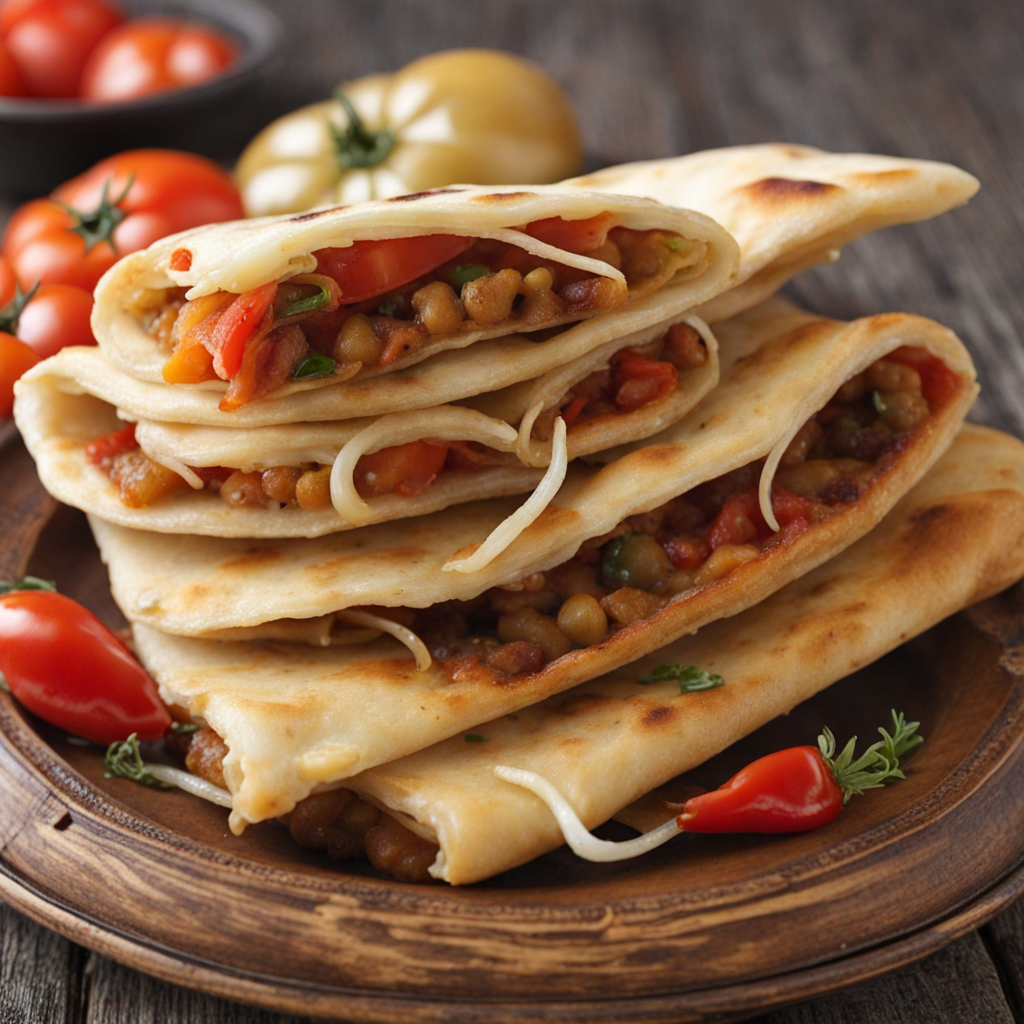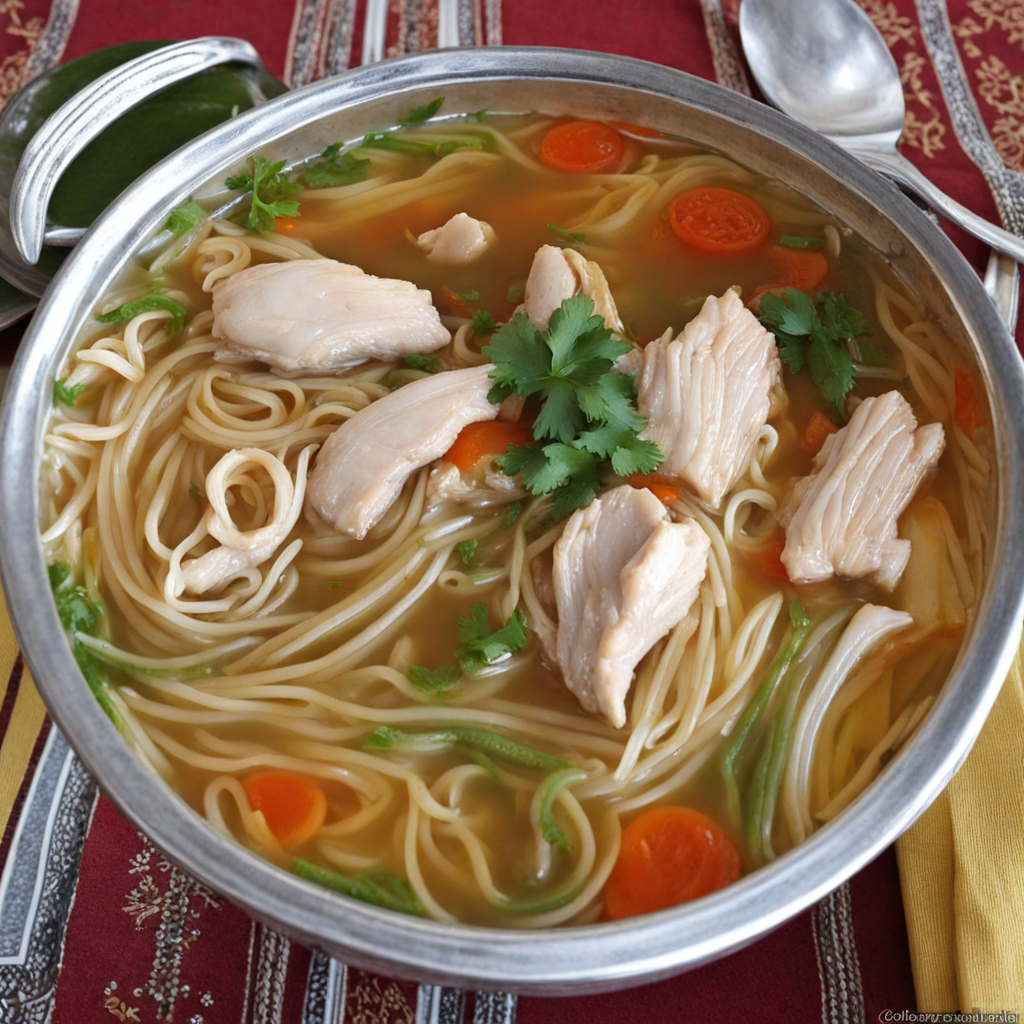Chakhchoukha
Chakhchoukha is a traditional Algerian dish that embodies the rich culinary heritage of the country. This flavorful meal consists of shredded flatbread called 'rougag' or 'mhadjeb', which is typically made from semolina dough. The bread is layered and cooked until it attains a delightful crispness while still remaining soft on the inside. The texture of the bread is essential, as it serves as the perfect vehicle for the accompanying ingredients, allowing for a harmonious blend of flavors in every bite. At the heart of Chakhchoukha is a savory stew made from a variety of meats, often including lamb or chicken, simmered with a medley of vegetables such as tomatoes, carrots, and bell peppers. The stew is seasoned with an array of spices, including cumin, coriander, and sometimes harissa, which imparts a warm, spicy kick. The combination of tender meat, wholesome vegetables, and aromatic spices creates a robust and satisfying dish that is both hearty and comforting, perfect for sharing with family and friends. To serve Chakhchoukha, the shredded bread is typically laid out on a large communal platter, topped with the rich stew and garnished with fresh herbs like parsley or coriander. This presentation not only enhances the visual appeal of the dish but also invites diners to dig in with their hands, embracing the communal spirit of Algerian dining. The melding of textures and flavors in Chakhchoukha offers a delightful culinary adventure, making it a must-try for anyone seeking to explore the diverse tastes of Algeria.
How It Became This Dish
The Engaging History of شخشوخة (Chakhchoukha) from Algeria Introduction to شخشوخة Chakhchoukha, a traditional Algerian dish, is a delicious and hearty meal that has captivated the palates of many across North Africa. Known for its unique combination of flavors and textures, شخشوخة is a staple in Algerian cuisine, particularly in the regions of the Sahara and the Kabylie Mountains. This dish not only represents the rich culinary heritage of Algeria but also serves as a cultural symbol, embodying the traditions, communal values, and historical influences that have shaped the nation. Origins and Historical Context The origins of شخشوخة can be traced back to the Berber communities that inhabit the mountainous and desert regions of Algeria. The Berbers, known for their nomadic lifestyle, relied heavily on the resources available in their environment, which included grains, legumes, and livestock. The dish likely emerged from the necessity of utilizing these ingredients in a manner that would provide sustenance for families, especially during times of scarcity. The roots of شخشوخة can also be linked to the broader history of North African cuisine. The region has been a crossroads for various cultures due to its strategic location, attracting traders, conquerors, and settlers from the Phoenicians to the Romans, and later the Arabs. Each of these cultures contributed to the culinary landscape of Algeria, infusing it with diverse flavors and cooking techniques. The introduction of spices such as cumin, coriander, and saffron, along with the use of preserved meats, has enriched the traditional recipes that characterize the region’s food. Cultural Significance In Algeria, شخشوخة is more than just a meal; it is a representation of family, community, and hospitality. Traditionally, it is prepared for special occasions, gatherings, and celebrations, emphasizing the importance of sharing food among loved ones. The communal aspect of eating شخشوخة is particularly noteworthy; it is often served in a large dish that encourages people to gather around, fostering a sense of togetherness. The dish is typically made with rougag, which are thin layers of flatbread that are torn into pieces. These pieces are then layered with a rich stew made from meat (often lamb or chicken), vegetables, and a variety of spices. The combination of flavors and textures in شخشوخة reflects the agricultural diversity of Algeria, showcasing the bounty of its land. The use of local ingredients such as chickpeas, tomatoes, and peppers not only highlights the regional agricultural practices but also reinforces a connection to the earth and the community. Development Over Time Over the centuries, شخشوخة has evolved, reflecting both the changing tastes of the population and the influence of globalization. Traditional recipes have been passed down through generations, often adapted to incorporate new ingredients or cooking methods. While the core components remain consistent, variations of شخشوخة can be found throughout Algeria, with each region putting its unique spin on the dish. In urban areas, for instance, the dish has been modernized to cater to contemporary palates, with the inclusion of more exotic spices and ingredients sourced from international markets. While some purists advocate for the traditional preparation methods, others embrace innovation, leading to a delightful fusion of flavors that pays homage to both the past and the present. Additionally, the rise of social media and food blogging has brought Algerian cuisine, including شخشوخة, to a global audience. Young chefs and home cooks alike are sharing their interpretations of this classic dish, showcasing its versatility and appeal. This newfound exposure has sparked interest in the culinary traditions of Algeria, encouraging a revival of interest in local ingredients and traditional cooking practices. Modern-Day شخشوخة Today, شخشوخة continues to be a beloved dish in Algeria, often featured at weddings, family gatherings, and cultural festivals. It symbolizes the warmth of Algerian hospitality, a reflection of the country's rich history and diverse cultural influences. Many Algerians take pride in their culinary heritage, and شخشوخة serves as a cherished emblem of this legacy. In recent years, there has also been a growing movement to preserve traditional cooking techniques and recipes amid the rapid modernization of society. Culinary schools and workshops are increasingly focusing on teaching the younger generation how to prepare traditional dishes like شخشوخة, ensuring that these practices are not lost to time. This effort to maintain culinary heritage is crucial in a rapidly globalizing world, where fast food and convenience often overshadow traditional dishes. Conclusion The history of شخشوخة is a testament to the resilience and adaptability of Algerian culture. From its Berber origins to its role as a symbol of community and hospitality, this dish encapsulates the spirit of Algeria. As it continues to evolve, شخشوخة not only preserves the flavors of the past but also embraces the possibilities of the future. Through shared meals and communal experiences, this beloved dish will undoubtedly remain a cherished part of Algeria's culinary identity for generations to come. In conclusion, شخشوخة is more than just a dish; it is a story of cultural significance, historical influences, and the enduring bonds of community. As Algeria moves forward, it carries with it the flavors and traditions of its past, ensuring that the heart of its cuisine continues to beat strongly through dishes like شخشوخة.
You may like
Discover local flavors from Algeria







